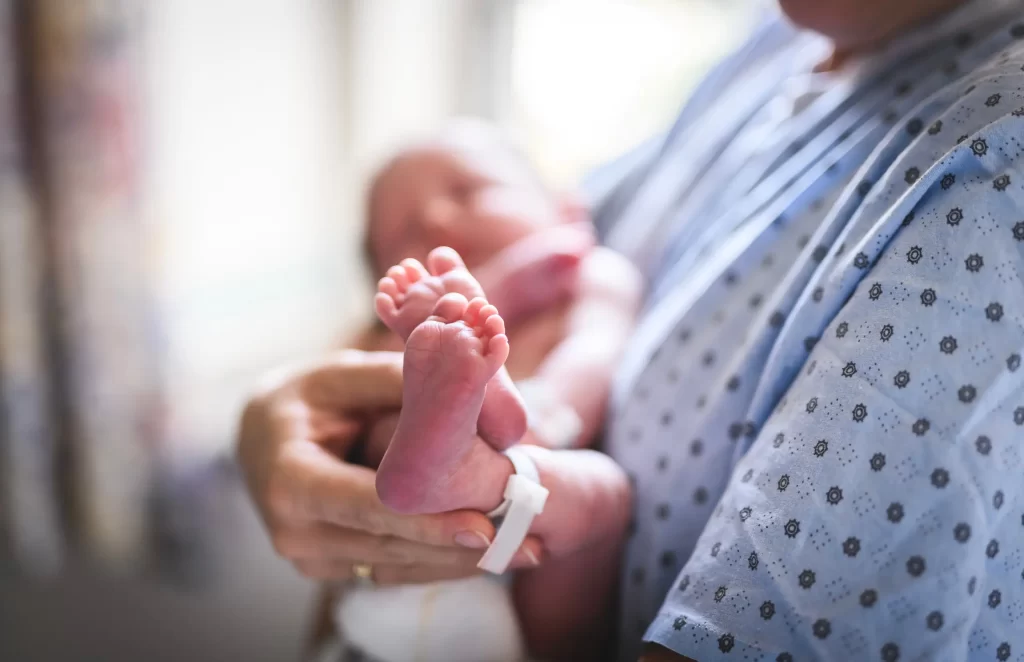Posted: 24/10/2024
Spina Bifida and Hydrocephalus Day 25th October 2024
Reading Time: 3 minutes
Spina Bifida and Hydrocephalus
Spina Bifida can affect 1 in 6 people. It is a type of neural tube defect and is essentially a fault within the tube that develops into the baby’s brain and spinal cord. The neural tube forms in early pregnancy and typically closes about 4 weeks after a baby is conceived. With Spina Bifida, part of the tube does not close or develop properly, causing a gap or split in the spine.
Spina Bifida is mostly detected during pregnancy, when undergoing antenatal scans. There are different types of Spina Bifida, of which the most severe types are myelomeningocele and meningocele, in which the spinal cord and protective membranes around it are exposed.

When this happens, the nerves in the spinal cord can become damaged, causing issues with the signalling between the brain and the spine.
It is noted that many babies that suffer with the more severe forms of Spina Bifida, then go on to develop hydrocephalus, which is excess fluid on the brain. Hydrocephalus can cause damage to the brain as the excess fluid causes increased pressure.
Raising Awareness
This awareness day was established and designated by the International Federation of Spina Bifida and Hydrocephalus (IFSBH) in 2011 to raise awareness and for people to understand the condition.
If you require further information or support with your condition their website has lots of useful information.
Treatment and Surgery
For further details of treatment and surgery the NHS website is a good place for information.
The more severe forms of Spina bifida are often treated with surgery to repair the opening in the spine within 48 hours of birth. Although the defect in the spine can be repaired, this does not reverse any nerve damage.

Surgery is also usually need to treat hydrocephalus, namely inserting a shunt to drain away excess fluid to another part of the body. This shunt remains there permanently and further surgery to it may be needed if the shunt becomes blocked or infected or if a larger shunt becomes required.
There are also other therapies that can help to make day-to-day life easier and improve independence for those with Spina Bifida, such as physiotherapy, occupational therapy and treatments for bowel and urinary problems, as well as aids and equipment to help with mobility.
It can be a challenging condition to live with, but many adults with spina bifida are able to lead independent and fulfilling lives.
What Negligence can occur?
Spina Bifida can have consequences if it is not treated promptly with surgery once the baby is born or if issues arise during such surgery.
There is a case under KC v UNIVERSITY HOSPITALS COVENTRY & WARWICKSHIRE NHS TRUST (2009) where a child was born with spina bifida and underwent ventricular surgery shunt procedure. Unfortunately, the shunt became blocked, which raised the intracranial pressure, but the child was discharged from the care of the negligent hospital before being readmitted 2 weeks later and undergoing surgery to deal with the blockage and reduce the pressure. Unfortunately, due to the delay, the child suffered bilateral blindness in any event.
Our Medical Negligence Lawyers have expertise in discussing with families and mothers, who have unfortunately experienced similar situations of children suffering brain injuries or injuries to their senses: hands, eyes, nose, mouth or ears.
At Williamsons Solicitors we have the skills, knowledge and staff to help you win your clinical negligence case. Our specialist Clinical Negligence Department has more than 35 years’ combined experience in the field and we are recognised by top industry bodies including Action Against Medical Accidents (AvMA) and The Law Society.
FRIENDLY, EFFICIENT LEGAL ADVICE
We’re ready to chat when you are
Drop us an email or give us a call for a no obligation chat to see if we can help.